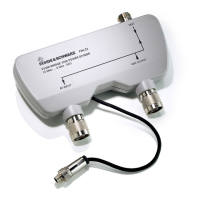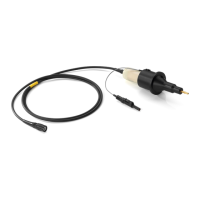Data and file managementMXO 4 Series
293User Manual 1335.5337.02 ─ 07
Using the "Save/Recall" dialog, you can store or load various data to files for further
usage, analysis and reporting:
●
Instrument settings: Chapter 12.1, "Save and recall user settings", on page 293
●
Waveforms: Chapter 12.2, "Save and recall waveform data", on page 297
●
Screenshots: Chapter 12.4, "Screenshots", on page 307
●
Reference waveforms: Chapter 12.2, "Save and recall waveform data",
on page 297 and Chapter 8.4, "Reference waveforms", on page 198
●
Measurement results: Chapter 12.3, "Saving results", on page 305
The [Camera] key can be configured to save or set up screenshots.
Storage locations
You can store data directly on the instrument, or to a USB flash drive. For local stor-
age, the path is always /home/storage/userData. The path has subdirectories to
organize the data. For storage on USB flash drive, the default path
is /run/media/usb/. On both storage media, you can create directories to organize
the data. You can also copy, paste and delete data.
On USB flash drives, the following file systems are supported: FAT32, exFAT and
NTFS.
The operating system of the oscilloscope differentiates between relative and absolute
paths.
A relative path starts with your current directory and does not start with a /, e.g.
userData.
An absolute path defines the location from the root directory, e.g. /home/storage/
userData.
12.1 Save and recall user settings
To repeat measurements at different times or perform similar measurements with differ-
ent test data, you can save the used instrument settings and load them again later.
Furthermore, you can refer to the instrument settings of a particular measurement
when analyzing the results. Optionally, the current toolbar and dialog configuration can
be included into the saveset.
Access: "Menu" key > "Save/Recall" key > "Save" tab > "User settings".
If you often save and load instrument settings, try the following shortcuts:
●
The "Save setup" toolbar icon saves the current settings to a file according to the
settings in "Save/Recall" key > "Save".
●
The "Recall" toolbar icon opens the dialog to select and load a setup.
●
You can assign a saveset to the [Preset] key and the "Preset" function on the tool-
bar, see Chapter 5.6, "Preset setup", on page 94.
Save and recall user settings

